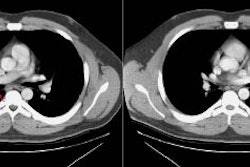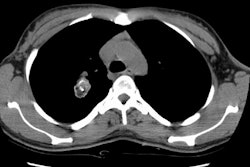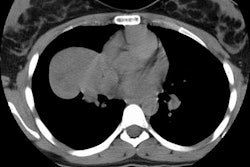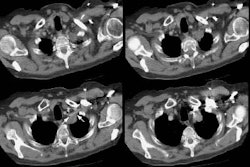PET in lung cancer.
Coleman RE
An estimated 180,000 new cases of lung cancer will be diagnosed in the U.S. this year, and lung cancer accounts for approximately 25% of all cancer deaths. Most lung cancers are initially detected on chest radiographs, but many benign lesions have radiologic characteristics similar to malignant lesions. Thus, additional studies are required for further evaluation. CT is most frequently used to provide additional anatomic and morphologic information about lesions, but it is limited in distinguishing between benign and malignant abnormalities. Because of the indeterminate results obtained from anatomic images, biopsy procedures, including thoracoscopy and thoracotomy, may be used even though one half of the lesions removed are benign and do not need to be removed. Fluorodeoxyglucose (FDG) PET imaging provides physiologic and metabolic information that characterizes lesions that are indeterminate by CT, accurately stages the distribution of lung cancer and provides prognostic information. FDG PET imaging takes advantage of the increased accumulation of FDG in transformed cells and is sensitive (approximately 95%) to the detection of cancer in patients who have indeterminate lesions on CT. The specificity (approximately 85%) of PET imaging is slightly less than its sensitivity because some inflammatory processes, such as active granulomatous infections, avidly accumulate FDG. The high negative predictive value of PET suggests that lesions considered negative on the study are benign, biopsy is not needed and radiographic follow-up is recommended. Several studies have documented the increased accuracy of PET compared with CT in the evaluation of the hilar and mediastinal lymph-node status in patients with lung cancer. Whole-body PET studies detect metastatic disease that is unsuspected by conventional imaging and demonstrate some of the anatomic abnormalities detected by CT to be benign lesions. Management changes have been reported in up to 41% of patients on the basis of the results of whole-body studies.
Publication Types:
Review
Review, tutorial



